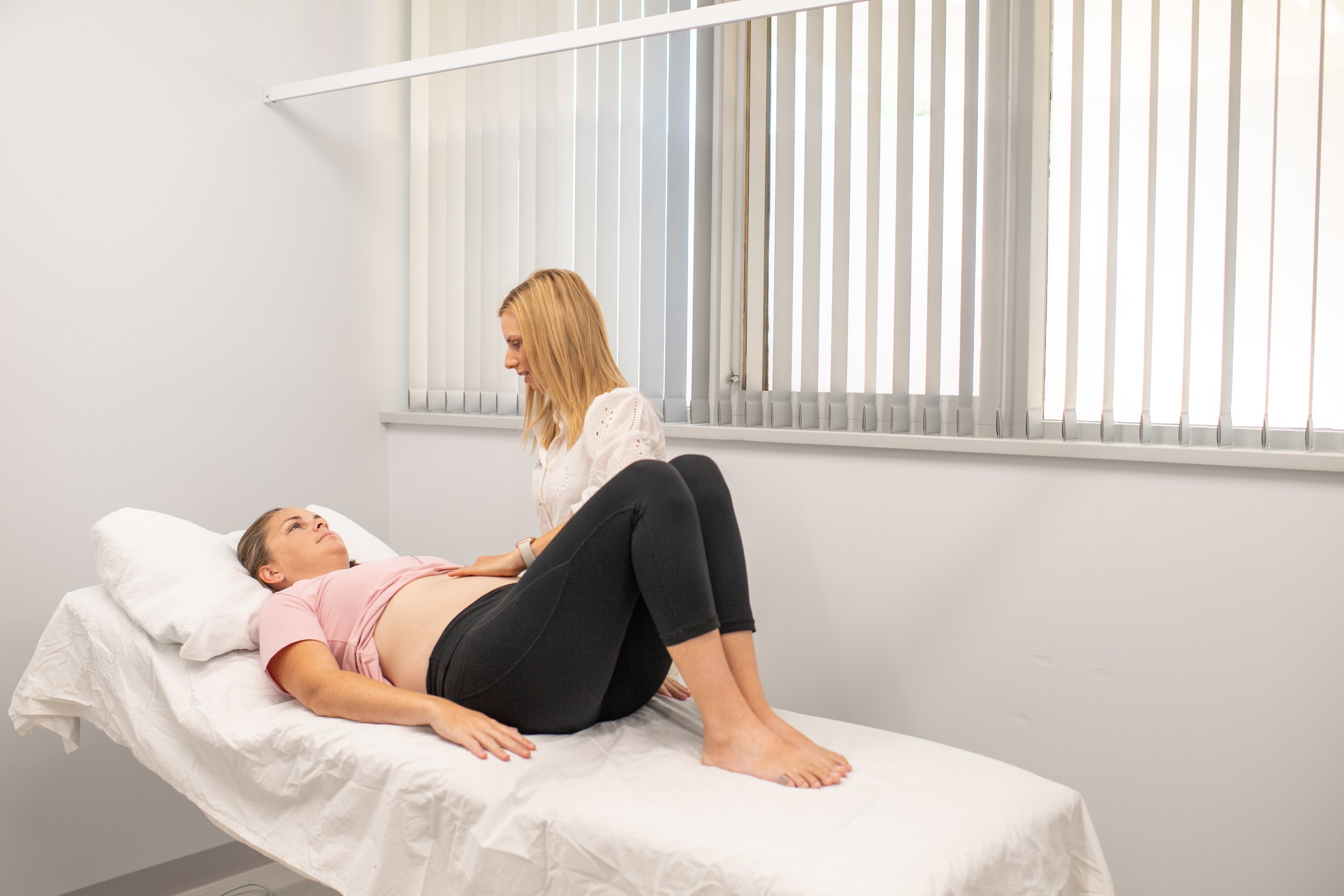Rectus Abdominis Diastasis (RAD)
Rectus Abdominus Diastasis during pregnancy:
Thinning and widening of connective tissue between rectus abdominal muscles.
Occurs during ALL pregnancies
Hormones soften the connective tissue
Growing uterus pushes out against abdominal wall
Increase in intrabdominal pressure
Changes in posture
Risk factors:
Multiple births
Maternal age
Large baby /small mother
Larger weight gain
Larger amount of fluid in uterus
Previous Diastasis
Weak abdominals
Inappropriate abdominal exercises
Heavy Lifting

When should I get my RAD checked?
At 6-8 weeks postpartum. We can then determine if there is any unresolved widening of your abdominals.
Sounds like you?
At Women’s & Pelvic Health Physio Riverland we can complete an individualised assessment of the abdominal muscles & provide a management plan to suit you.
The abdominal muscles act as your own personal corset and brace within your body, hence why it is so important to address them not only after baby is born but also during pregnancy to prevent excessive RAD developing, as a result of inappropriate exercise or activities.
Returning to functional activities and achieving your goals is our highest priority.
If you are postnatal and do have a separation you are concerned about, please remember some your tissues may still be healing post baby.
Management:
Posture
Breathing
Provision of safe exercises
Education around controlling intra-abdominal pressure, avoiding excess doming and excess pressure on the pelvic floor.
Assessment and fitting of compression support garments such as the SRC range.
